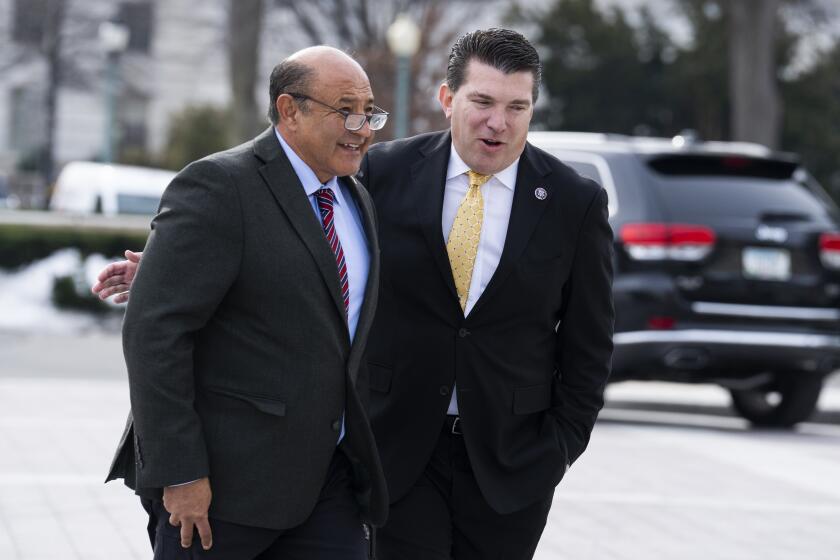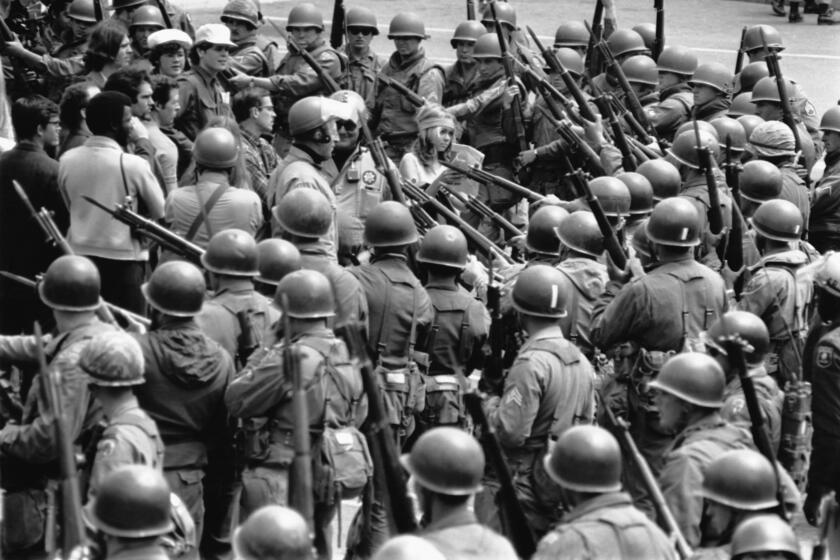State Panel Acted Correctly on Rail Issue
The question of how the San Fernando Valley East-West Rail Transit Project will proceed--above ground, underground or with a combination of the two--is still very much an open one. That is why a state Senate subcommittee was right when it rejected, on Wednesday, a bill by Sen. Herschel Rosenthal (D-Los Angeles) that would have effectively killed one of those options by making it prohibitively expensive.
Rosenthal’s effort was premature and would have been unduly constraining. Moreover, it represented an unwarranted attempt to force the Legislature to intervene in what is rightly a local planning matter.
The East-West Transit Project will eventually stretch Metro’s Red Line from its Universal City or North Hollywood station to Warner Center. The option that Rosenthal’s legislation was intended to discourage is an elevated rail line that would run from Universal City along the median of the Ventura Freeway. His clear preference is for an alternative, underground route from North Hollywood. We have repeatedly proposed a third option, that of an extension of the subway to the San Diego Freeway. The feasibility of an above-ground solution could then be considered for the second leg of the route.
The argument for local decision-making on a local planning issue was also made by Caltrans officials and the office of Gov. Pete Wilson when they unexpectedly surfaced to argue strongly against Rosenthal’s bill. The subcommittee subsequently deep-sixed it on a 4-to-3 vote.
Rosenthal’s second attempt in two years to derail the elevated rail route had taken issue with the safety of the elevated rail option. Specifically, his bill would have required the widening of portions of the Ventura Freeway before any rail line could be built inside its median strip. Rosenthal has said that he is “actually convinced they can’t build it on top of this freeway.” It’s a fact that the freeway currently does not meet minimum state and federal width safety standards, but those standards have often been suspended to allow for narrower traffic lanes in urban areas.
It is true that the old Los Angeles County Transportation Commission had conditionally approved the Ventura Freeway route. But the commission has now become the Metropolitan Transportation Authority, and it is studying both the elevated and underground options and, we hope, our compromise between the two. A final decision by the MTA is not expected until 1994, which is part of the reason why Rosenthal’s bill was premature.
In fact, the safety of the elevated rail route is one of the matters that the MTA should study closely, based on the concerns expressed by the old commission staff. “The degree to which design approvals for construction in the freeway median may trigger attendant needs for freeway widening and/or construction is the principal reason for that concern,” the staff said. Now the MTA will be allowed to decide without interference from Sacramento.
More to Read
Start your day right
Sign up for Essential California for news, features and recommendations from the L.A. Times and beyond in your inbox six days a week.
You may occasionally receive promotional content from the Los Angeles Times.






